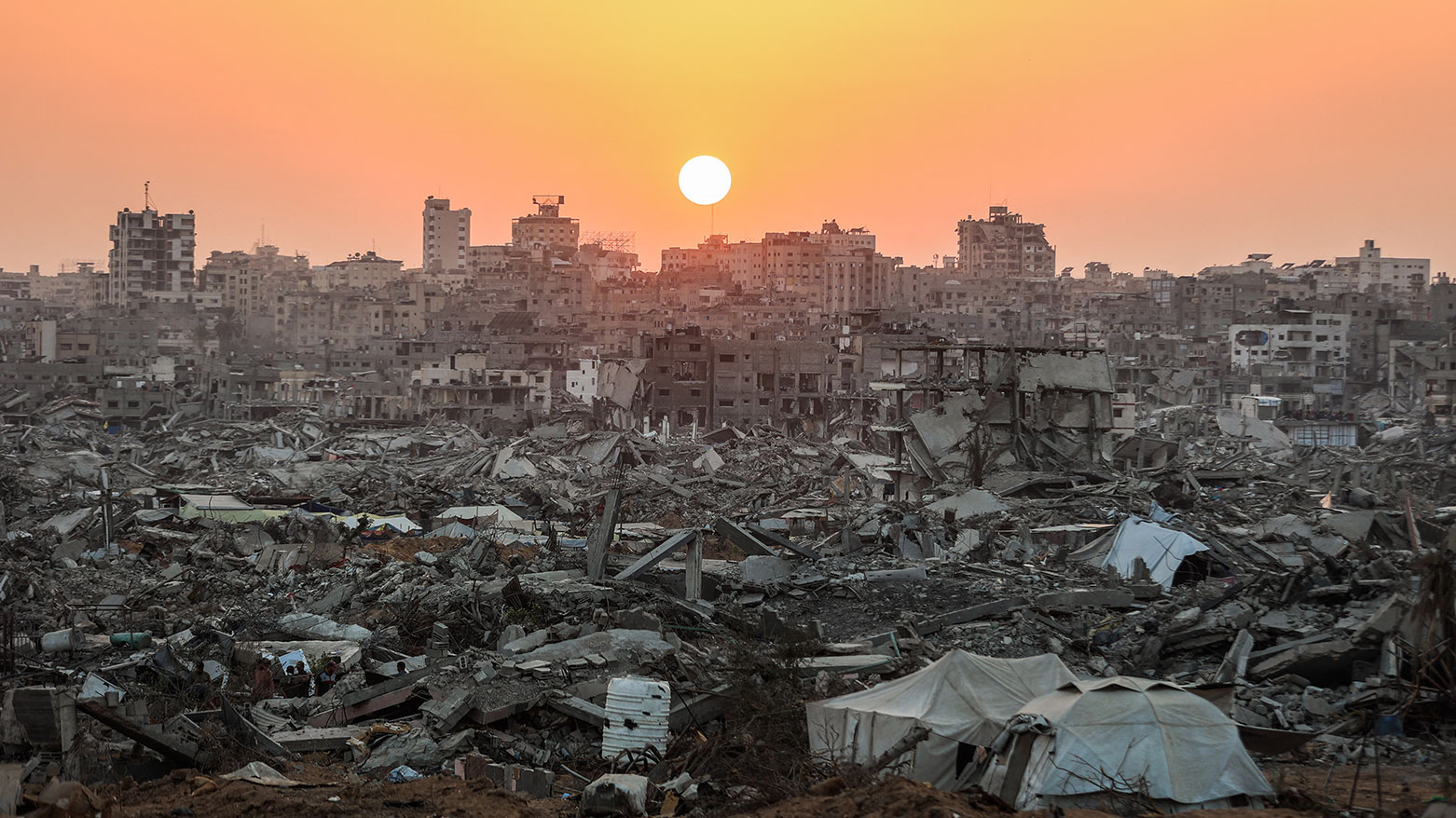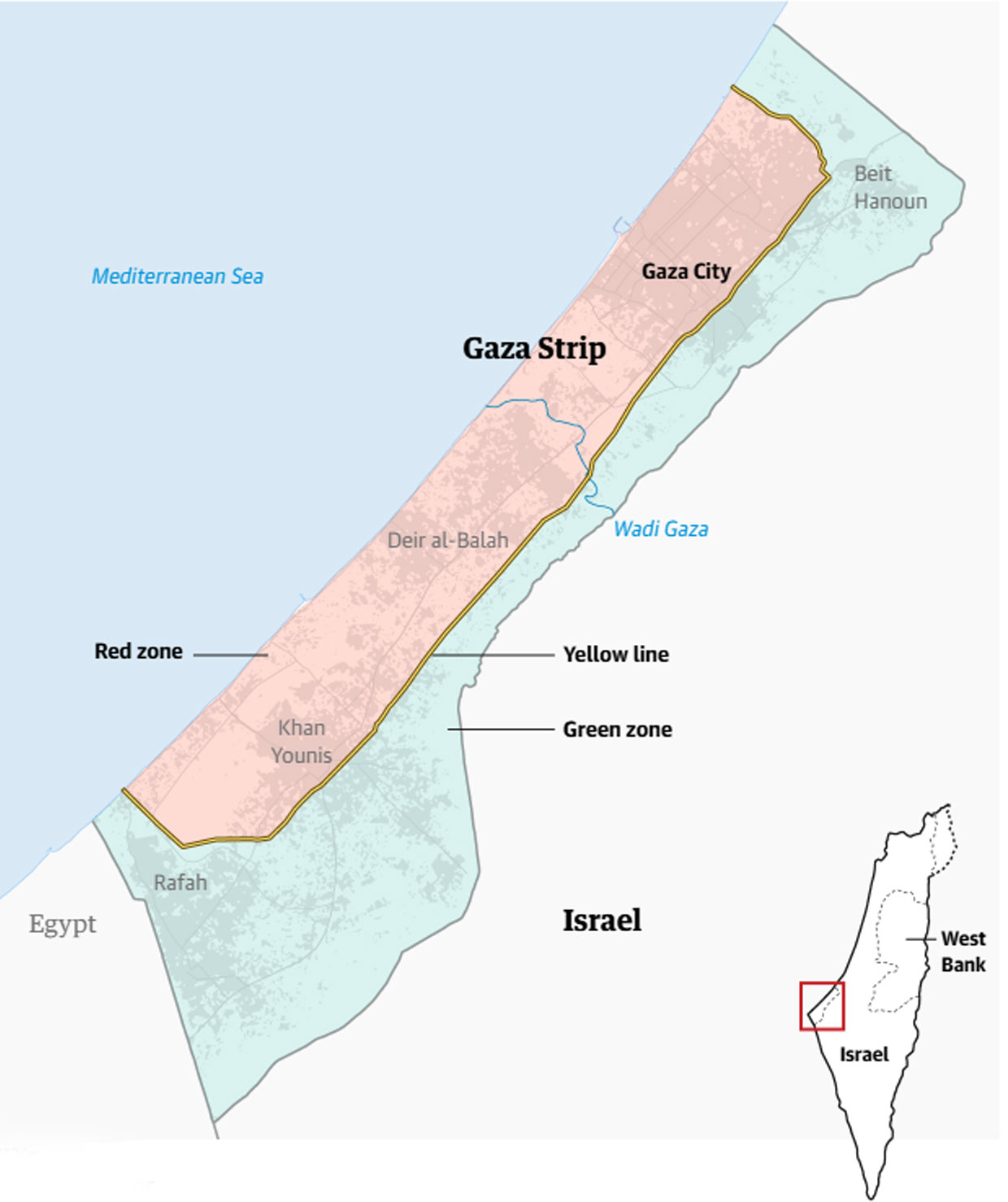UN Security Council to Vote Monday on Trump’s Gaza Plan Amid Competing Drafts
The UN Security Council votes Monday on Trump’s Gaza plan, as the U.S. pushes for a stabilization force and Russia offers a rival draft. New documents show Washington planning a divided Gaza, raising global concern over reconstruction and long-term stability.

ERBIL (Kurdistan24) – The United Nations Security Council will vote Monday on a U.S.-drafted resolution endorsing President Donald Trump’s Gaza peace plan, as competing proposals and mounting questions about the future of the enclave deepen global divisions over the path ahead for the war-ravaged territory.
According to diplomats, Washington finalized negotiations last week within the 15-member Council on a text that would follow up on the ceasefire ending the two-year war between Israel and Hamas. The draft resolution, seen by AFP, “welcomes the establishment of the Board of Peace,” a transitional governing body for Gaza that Trump would theoretically chair until the end of 2027.
The text would also authorize member states to form a “temporary International Stabilization Force (ISF)” to work alongside Israel, Egypt, and newly trained Palestinian police forces in securing border zones and supporting the demilitarization of Gaza.
Unlike earlier versions, the latest U.S. draft references the possibility of a future Palestinian state — a shift that several Council members had pressed for during negotiations.
In a rare joint statement on Friday, the United States, Qatar, Egypt, the United Arab Emirates, Saudi Arabia, Indonesia, Pakistan, Jordan, and Türkiye urged the Council to adopt the resolution “swiftly.”
They emphasized unified support for the draft and described its passage as essential for consolidating the ceasefire and launching the transitional framework.
The push came as Russia circulated a competing draft, which does not endorse the creation of the Board of Peace nor authorize immediate deployment of an international force. Moscow’s version acknowledges “the initiative that led to the ceasefire” but does not name Trump, and instead calls on the UN Secretary-General to assess options for a potential stabilization force without committing to it.
Russia stated its alternative recognizes the “two-State solution” more explicitly than the U.S. draft, noting that this principle “was not given due regard” in Washington’s text.
The White House has described the ceasefire as “fragile,” warning that failure to adopt the U.S. resolution risks renewed fighting.
“Any refusal to back this resolution is a vote either for the continued reign of Hamas terrorists or for the return to war with Israel,” U.S. Ambassador to the UN Mike Waltz wrote in an op-ed.
“Every departure from this path… will come with a real human cost.”
Yet diplomatic sources say multiple member states have concerns about the absence of a robust monitoring mechanism, the undefined role of the Palestinian Authority, and unclear details of the ISF’s operational mandate.
According to U.S. military planning documents seen by The Guardian, Washington envisions a long-term division of Gaza into distinct zones:
• A “green zone”: under Israeli and international military control, where reconstruction would begin.
• A “red zone”: comprising most Palestinian population areas, left in ruins with no immediate rebuilding planned.

Foreign forces would initially deploy in eastern Gaza alongside Israeli troops along the existing “yellow line,” which currently divides Israeli-held territory from areas where Hamas is reasserting control under the ceasefire.
A U.S. official acknowledged the division was far from ideal:
“Ideally you would want to make it all whole, right? But that’s aspirational… It’s not going to be easy.”
The documents indicate that reconstruction inside the “green zone” is envisioned as a long-term strategy to draw civilians toward rebuilt areas, potentially driving gradual reunification. But humanitarian organizations — still reeling from two years of destruction — have not yet been formally briefed on any changes to U.S. plans.
Earlier U.S. proposals for fenced-in camps known as “Alternative Safe Communities” (ASC) have been dropped, officials said, but aid agencies report they have not received updated guidance. The absence of a detailed plan for large-scale rebuilding, Israeli withdrawal, or an effective peacekeeping mechanism raises concerns that Gaza could enter a prolonged state of instability — “not war but not peace.”
More than 80% of Gaza’s buildings and infrastructure have been destroyed, including nearly all schools and hospitals. With Israel continuing to restrict aid materials, millions remain without shelter, clean water, or essential supplies.
Trump’s 20-point plan relies heavily on an International Stabilization Force. Documents from U.S. Central Command (CENTCOM) proposed:
1-Up to 1,500 UK infantry troops
2-Around 1,000 French soldiers
3-German, Dutch, and Nordic units for hospitals and logistics
4-A potential Jordanian contribution of hundreds of infantry and up to 3,000 police officers
But diplomats say these expectations are unrealistic. Several European governments remain unwilling to risk troop deployments in Gaza after years of conflict in Iraq and Afghanistan. Jordan’s King Abdullah has already ruled out sending soldiers, calling the political cost too high.
A U.S. official admitted the planning process is “very dynamic” and fluid, noting that troop commitments will not be finalized until the UN resolution is passed.
Even then, the ISF would be confined to the green zone.
“You’re not going to leave the green zone,” the official said, underscoring fears that the force could become an enclave reminiscent of previous U.S. “green zones” in Baghdad and Kabul.
U.S. planners hope reconstruction in the green zone will draw civilians across the Israeli line of control. But nearly the entire population — more than 2 million people — is currently crammed into the red zone, stripped of services and basic necessities.
Without a clear political mechanism, humanitarian framework, or timeline for Israeli withdrawal, mediators warn of a Gaza trapped in limbo: divided, unstable, and without a functioning Palestinian authority.
The Security Council vote on Monday is therefore seen as decisive — either setting the course for Trump’s transitional model or plunging the ceasefire into further uncertainty.
